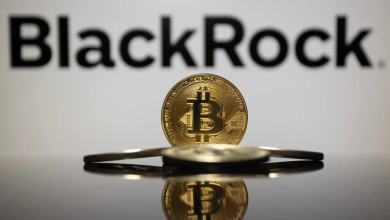The Future of Influencer Marketing: Paying Creators Through Crypto Wallets


KEY TAKEAWAYS
- Crypto wallets redefine creator payments, offering instant, global, and programmable transactions.
- Smart contracts automate milestone-based payouts, reducing administrative work and disputes.
- Stablecoins provide predictable value while enabling on-chain transparency.
- Tokenized rewards introduce new income models, such as royalties and revenue-sharing.
- Brands gain efficiency and traceability, while creators enjoy quicker settlement and more autonomy.
- Regulation, volatility, and UX hurdles remain the main barriers to mainstream adoption.
Influencer marketing is undergoing a quiet revolution. Once dominated by brand-managed ad purchases, affiliate links, and bank transfers or payouts, creator compensation is beginning to shift toward a new set of tools: crypto wallets, tokenized rewards, and on-chain contracts.
Paying creators through crypto wallets not only changes how they get paid but also reshapes incentives, speeds settlement, improves transparency, and opens new creative monetization models. This article explores why wallets matter, the practical benefits and pitfalls, and what brands and creators should do to prepare for a future where on-chain payments become routine.
Why Crypto Wallets are Gaining Traction
The core appeal of crypto-wallet payouts is simple: direct, quick, and programmable payments. Instead of waiting days for ACH or wire transfers, creators can receive funds almost instantly (subject to network congestion) in a self-custodied wallet. That immediacy matters for micro-influencers and global creators who can’t afford long payment cycles.
Beyond speed, wallets enable programmability. Brands can pay via smart contracts that release funds automatically when pre-agreed conditions are met, for example, when a tracked link reaches a threshold, or when a video hits a milestone. This reduces administrative overhead, disputes, and delays, and it aligns incentives in ways traditional payment rails can’t.
Crypto wallets also support fractionalized and layered compensation. Brands can pay a base fee in and add performance bonuses in tokens that represent future access, revenue share, or governance rights. This creates richer business relationships: creators become stakeholders with a vested interest in a project’s long-term success.
New Models Unlocked by Wallets and Tokens
Token-enabled models expand what “payment” can mean:
- Performance Micro-Rewards: Instead of a single lump sum, creators receive small token payments per conversion or per engagement. Over time, these micro-payments compound into meaningful income streams.
- NFT-Based Royalties and Licensing: Brands can issue tied to campaign assets (exclusive clips, behind-the-scenes content). Creators receive a share of secondary sales or royalties whenever those NFTs trade.
- Revenue-Share Tokens: Launch a campaign-specific token that entitles holders (including creators) to a share of the campaign’s future revenues or profits.
- Milestone Smart Contracts: Automatic release of payments later than verifiable milestones reduces disputes and audits.
- Cross-Border Micropayments: Stablecoins let brands pay creators in any country without expensive FX fees or long bank delays.
These models can make compensation more transparent and align long-term incentives between creators and brands, encouraging higher-quality work and sustained collaboration.
Practical Advantages For Brands and Creators
For creators:
- quicker settlement, near-instant receipts shorten cash-flow cycles.
- Lower payment friction: no need for bank details, international wires, or payment processors.
- New revenue opportunities: royalties, token appreciation, and secondary markets.
- Greater financial sovereignty: self-custody gives creators full control of funds.
For brands and agencies:
- Automated compliance and traceability: on-chain records provide immutable proof of payment and activity.
- Reduced administrative costs: fewer invoices, fewer disputes, and fewer manual reconciliations.
- Innovative campaign mechanics: token incentives and NFTs create novel engagement hooks.
- Global reach: easier to onboard creators worldwide without complex payroll setups.
Obstacles to Adoption
Despite the promise, several practical and perceptual hurdles remain:
Regulatory and Tax Uncertainty
Crypto regulation is still evolving. Brands must navigate KYC/AML rules, securities law risks (if tokens look like investment contracts), and tax reporting complexities in multiple jurisdictions. Creators need clarity on how token income is taxed.
Volatility
Native cryptocurrencies fluctuate dramatically. Paying creators in volatile tokens can lead to unpredictable real-world incomes. Stablecoins mitigate this but introduce counterparty and regulatory considerations.
User Experience and Onboarding
Many creators are unfamiliar with wallets, viewd phrases, and private-key management. Poor UX or security missteps (lost keys, phishing) can deter mainstream adoption. Wallet setup, education, and custodial options are needed.
Perception and Brand securety
Crypto still carries baggage for some consumers and stakeholders. Brands must assess reputational risks and ensure campaigns comply with platform rules. Social platforms may have varying policies about crypto promotions.
Network Friction and Fees
On some blockchains, transaction fees can spike (e.g., during congestion). Brands need to choose chains and payment strategies that minimize costs and delays.
Measurement and Attribution
Linking on-chain payments to off-chain actions (views, clicks, conversions) requires robust hybrid tracking and trusted oracles or cryptographic proofs to trigger smart contracts reliably.
Best Practices For Brands begining Now
If you’re a brand or agency experimenting with wallet payouts, follow these practical steps:
- begin Small and Hybrid: Offer optional crypto payouts alongside fiat. Let creators choose. Pilot with stablecoins to avoid volatility complaints.
- Use Custodial + Non-Custodial Options: Provide for onboarding ease, but let creators graduate to self-custody when ready.
- Be Transparent About Taxes and Reporting: Partner with tax advisors and provide creators with clear guidance and documentation.
- Design Simple, Human-Friendly UX: Offer step-by-step wallet setup guides, security best practices, and customer support.
- Choose Low-Fee Chains or Layer-2s: Prioritize blockchains with low transaction costs to avoid eating into creator compensation.
- Leverage Smart Contracts for Trust: Use milestone contracts and escrow patterns to automate releases while ensuring accountability.
- Document KYC/AML Processes: Ensure compliance for large payouts or campaign types that trigger regulatory scrutiny.
Looking Ahead: Mainstream or Niche?
In the short term, wallet payouts will likely remain a niche for tech-forward creators and brands experimenting with Web3. However, the trajectory is clear: as wallets become more user-friendly, regulation clarifies, and reduces fees, on-chain payments will broaden.
Expect major platforms and payment providers to integrate wallet support, making crypto payouts an simple checkbox in campaign setup flows.
Longer term, the integration of identity, reputation systems, and on-chain credentials could radically simplify how creators prove performance and get paid. Imagine a world where verified, privacy-preserving proofs of content delivery trigger automatic payment, no invoices, no waiting, no disputes.
That’s the promise wallets bring: quicker settlement, richer incentives, and new economic models that reward true creator value.
Wallets, Tokens, and the New Economics of Influence
Paying creators through isn’t a silver-bullet replacement for fiat systems; it’s an expanding toolkit that solves real pain points: speed, programmability, and new monetization models. For brands, the transition demands careful legal, tax, and UX planning.
For creators, it offers quicker pay, novel revenue streams, and greater financial control. As infrastructure matures and adoption grows, wallets will shift from experimental perk to standard option, transforming influencer marketing into a more direct, transparent, and creatively aligned economy.
FAQ
Why are crypto wallets becoming popular for influencer payments?
Crypto wallets offer quick, borderless, and programmable payments. They reduce delays, lower fees, and enable smart contracts that automatically release funds when campaign milestones are met.
Are crypto payments secure for creators?
Yes, when used properly. Wallets give creators full control of their funds through self-custody. However, creators must learn basic wallet security practices, like protecting Secret keys and avoiding phishing scams.
What kinds of crypto are brands using to pay influencers?
Most brands use stablecoins (like USDC or USDT) to avoid volatility. Some also issue tokens that grant access, revenue-sharing rights, or governance participation.
How do smart contracts improve influencer marketing?
Smart contracts automate payouts, releasing funds only when predefined goals such as view counts or engagement metrics are reached. This reduces disputes and builds transparency.
Can creators convert crypto payments to regular currency?
Yes. Many wallets integrate with platforms that let creators swap crypto for fiat currencies or stablecoins, depending on local regulations and platform support.
What legal and tax challenges do crypto payments pose?
Both brands and creators must follow local KYC/AML rules and report crypto income for taxation. Partnering with advisors who understand crypto tax laws ensures compliance.
Do social platforms allow crypto-based influencer campaigns?
Policies vary. Some platforms are open to blockchain integrations, while others restrict crypto promotions. Brands should verify platform rules before launching campaigns.







